In pictures: Dusty Kid's Sardinian studio
Techno producer Paolo Lodde aka Dusty Kid has ripped up the rulebook on his fourth album Not So Green Fields
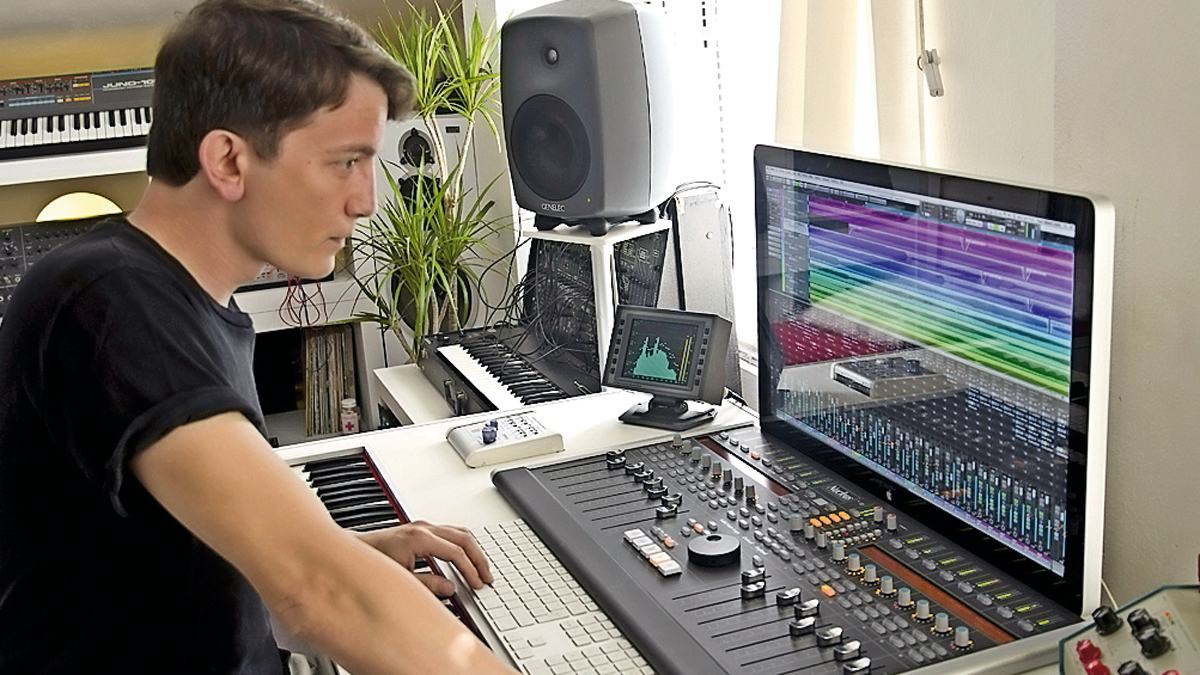
Intro
Having released under various pseudonyms before settling on Dusty Kid, named after the “dirty children” you see in Spaghetti Western movies, Paolo Lodde released his debut album A Raver’s Diary in 2009. A foray into techno, there was little sign of Lodde’s academic inductions on piano and violin.
Further gregarious single and EP releases followed, bookmarked by albums such as Beyond That Hill and III, by which time Lodde’s sound had transgressed to acid techno with caustic splashes of dark ambient.
Not So Green Fields takes another swerve into the unknown. Covering an entire amalgam of influences, the album is bound by some manifold storytelling and a remarkable sense of self- confidence. Despite that, self-depreciation is one of Lodde’s most appealing characteristics.
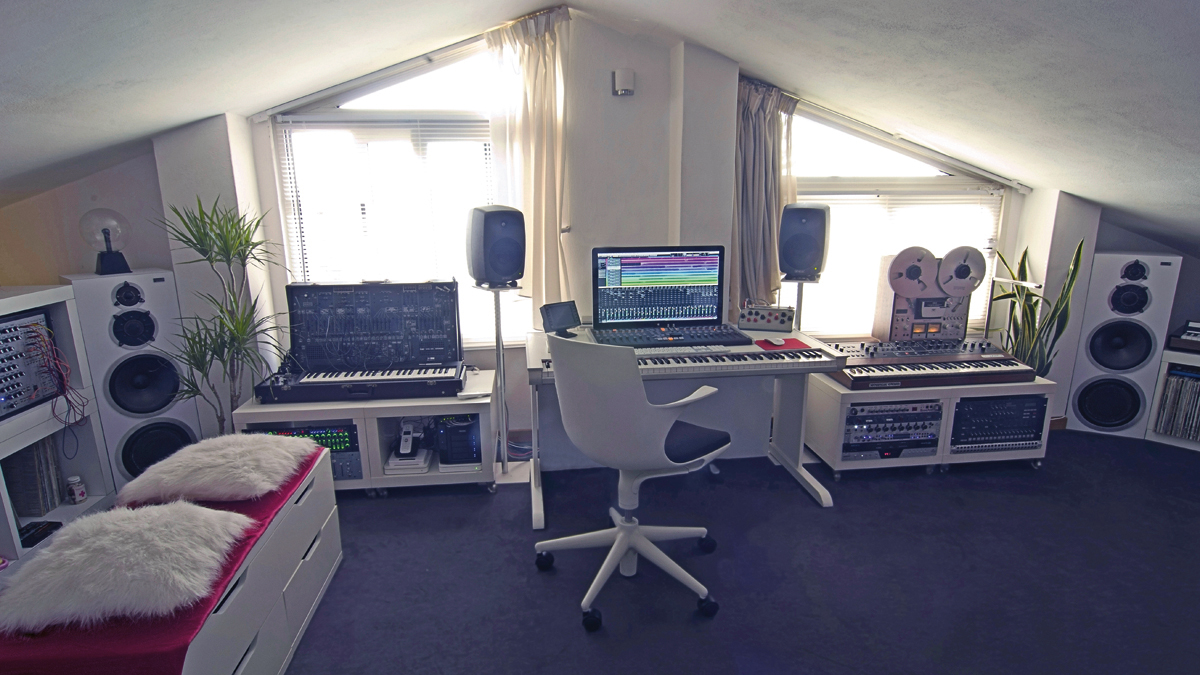
Sound evolution
Not So Green Fields is very different... Would you call it an evolution of your sound?
“I don’t actually know if I can consider it as an evolution, but a lot of things have changed in my life throughout the last six years and my music has always reflected those changes. You can tell by listening to my four albums in a row. A Raver’s Diary was very exuberant, theatrical and overwhelming, but somehow arrogant and naïve – and so was I!
“Beyond That Hill was also a bit like that, but you could feel something very personal and intimate there. III is completely hidden and timid; wrapped in a foggy atmosphere and extremely private. During that period my social life had changed completely – I was no longer the party animal I used to be. When I turned 30, I even started thinking about having children and stuff like that. Generically, the music is more crossover and pop-oriented, and has more songs that can be listened to outside of a club or festival.”
Have you learned to produce better?
“Production-wise I think it’s maybe a bit better than previous albums. Not technically, but musically it is more complex with more real instruments and vocals, different backgrounds and more listening levels. Some people claim A Raver’s Diary sounds like a toy compared to this one, and I’d agree. I’d say A Raver’s Diary and Beyond That Hill were just attempts at an album and concept that finally took a ‘human’ or ‘real’ form on Not So Green Fields.”
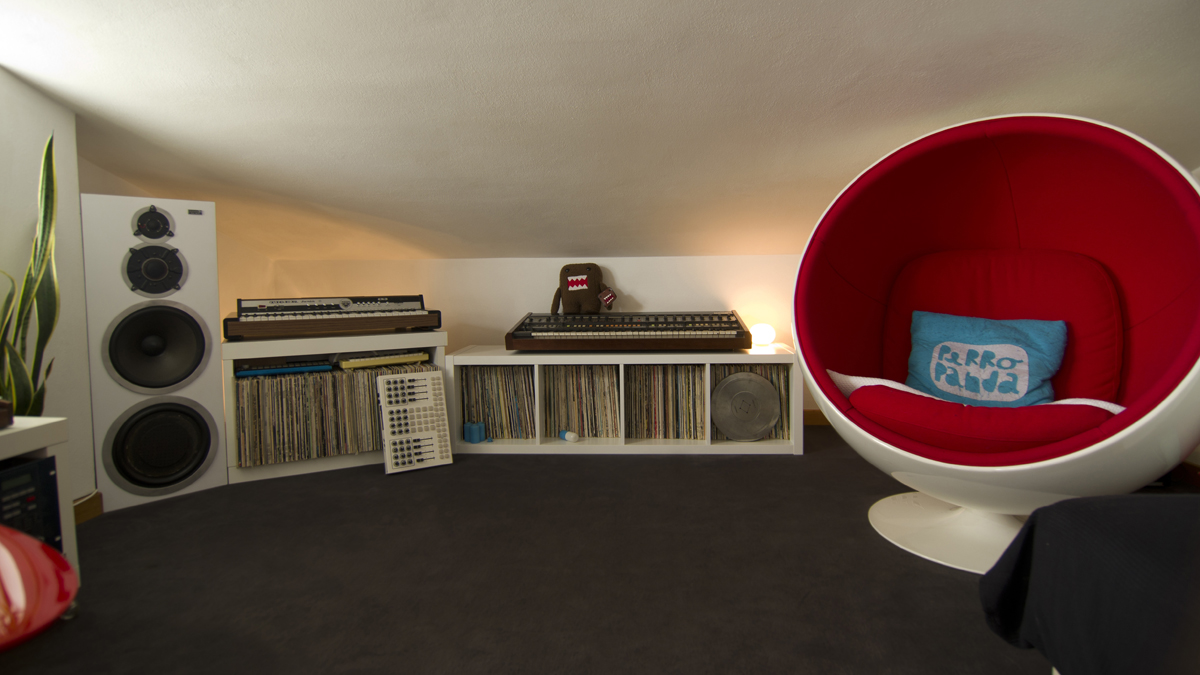
Inspirations
In what way was the album inspired by your homeland, Sardinia?
“Although I’d wanted to dedicate an album to Sardinia for quite a long time, everything started on the morning of 5th July 2014 during the wedding of two very good friends. The celebrations took place in the Medio Campidano area, between Sardara and Guspini, a very lovely area in the mid-west of the Cagliari province.
“From May until November, it’s full of beautiful yellow landscapes and enormous wheat fields that fit amazingly with the island’s blue skies. During the whole celebration, I started having a clear idea about how the concept would be built: a foreign traveller coming from a cold country, spending two weeks on the island during the summer period. The very first thing he did was attend this wedding party full of Sardinian people celebrating. That way he would have a bizarre impression of the island’s inhabitants. His journey would have started in a sort of comic, over-the-top way; opposite to the touristy coasts and beaches. I found this idea inspirational and started putting some sketches down.”
What part does your environment play on your music?
“It’s absolutely fundamental. It’s strange to think that 15 years ago Sardinia was like a prison for me. I wanted to make music and it seemed like being in such a small place, which was away from everything, would be the worst place to be. But when I started travelling the world every weekend, month by month it turned into the opposite.
The more I was physically detached from the island, the more I felt its strong gravitational pull. It seems to be a common thing for other inhabitants too; a lot of people leave the island due to a lack of job opportunities, but 95% want to return after a while.”
What are the mysterious ‘Troglodytes’ you refer to on track two?
“Ha! Let me explain. Since I was young, I have always witnessed bad comments from the rest of Italy about Sardinia and its inhabitants. Being an island that, geographically, is far away from the nation we belong to, always leads people to think we are backwards and ignorant or stuff like that. Believe me, a lot of times I’ve been asked, ‘Oh, you’re from Sardinia? Do you have schools there? Do you use cars or have stores!?’
“What’s nonsense about this is that a lot of the Italian people that consider us so ‘backwards’ love to spend their vacation on the island and its coasts. Also the government put shit stuff like military stations and nuclear bases here, like it’s some parking zone away from the nation. The grumpy speech at the end of the track is an old drunk that screams to the poor foreign traveller that he wants island independence and to take back all the ‘shit’ the government left in the territory that has made it so polluted.”
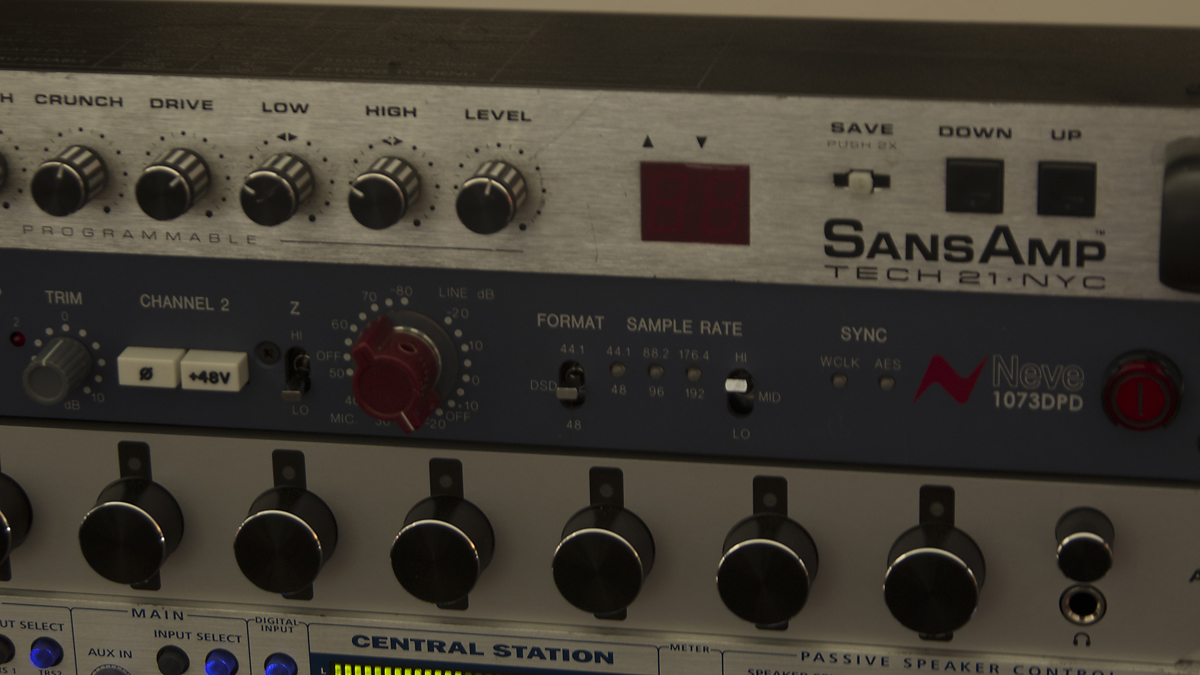
Practice makes perfect
The album is much more rich and expansive than we’ve heard from you before; would you put that down to maturation?
“I can’t call it maturation because for me mature is something already grown or somehow complete, which are qualities I definitely don’t have yet. As I said, there is a personal growth that is inevitably reflected in the music, but I have really put all my heart into this record and maybe you see that as ‘expansive’ because I can express my music more naturally than before.
“The way you use these tools to express yourself is important. I’m not referring to instruments like synths and guitars, but more generally – being a creator of something that is able to decode his feelings into something he can share with other people, whether it be music, sculpting, painting or whatever. Every track on the album hasan immediately recognisable mood, and this aspect was very important from the beginning: how to translate these different moods into music that people could travel with. I think that’s what makes this album better than the previous ones.”
In what areas do you think you have improved as a producer since your debut six years ago?
“Technically, I tried to do my best but it still does not sound as I want it to. I don’t have the knowledge and the experience to make it sound that good. Most of my favourite records are produced by the artist himself but engineered and mixed by someone else, so this means it takes an engineer to make a record sound very good, and I am not an engineer.
“I do make a lot of mistakes during production, but I think that’s part of the trial and error process and, although I’ve been making music for years and have reached a certain level, it still doesn’t sound good enough. Every single track I do teaches me something new, but it will probably take 300 or so tracks to reach the level of an engineer, if not more!”
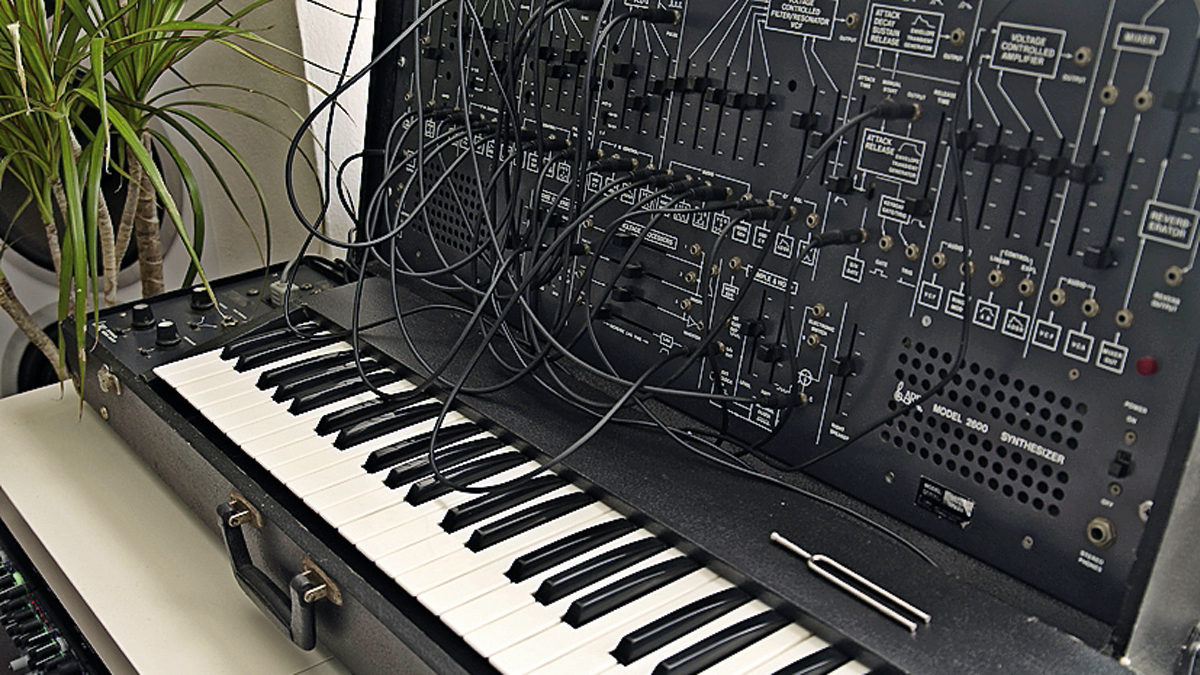
Club scene
We can see this track working as a euphoric trance track? Perhaps open to remix?
“To be honest, I’m not sure. Perhaps it would fit more in an outdoor festival than in a club. It’s at the end of the album, right before the epilogue. The traveller does some hang gliding from the Villasimius cliffs at sunrise, and this track describes the moment he starts elevating from the ground and tours over the island from high above.
“It’s 135bpm, the fastest track I’ve ever made, and I find it’s kind of psychedelic, dreamy and magical, but maybe a bit too pretentious and cinematic for the dancefloor and would need a stronger bass drum. Plus, it is not loopy at all; apart from the rhythmic side there is not a single bar repeated, and this is not very easy to digest in a club environment. I’ve tested it on a few occasions and it makes a very nice atmosphere, but it’s very risky if you play it at the wrong moment.”
Was there a choice made to shift the music away from the clubs and further into the ‘listening’ domain?
“In a way, yes. Doing something that works well in clubs puts you within certain limits and I didn’t want these limits to force how I shaped the record too much. Of course, when you come from the club scene, making a Jazz record would be senseless, so I had to find a compromise, making it listenable but still danceable. Also, in club music EPs and singles are more popular than the album format, so I prefer to use singles and EPs as tools made for the dancefloor.”
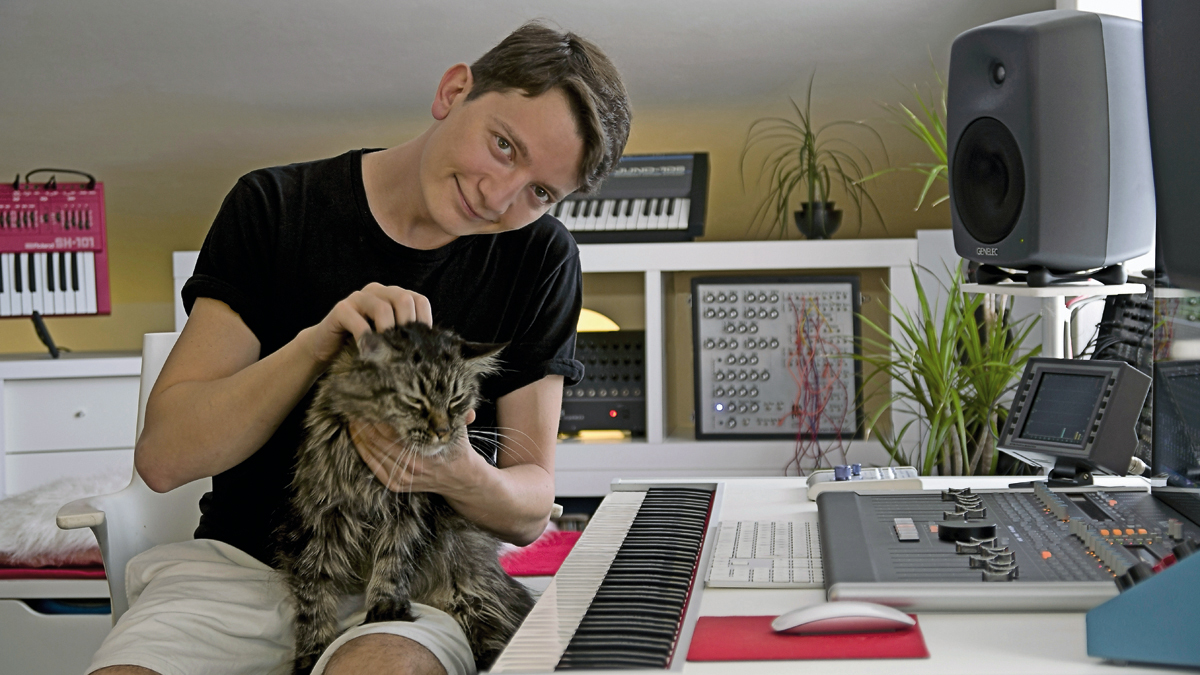
Experimentation
Arvéschida sounds like a soundtrack piece by Vangelis. Was he, or were other soundtrack composers, influential?
“That’s a very big compliment as Vangelis is one of my favourite composers. For sure he’s been influential across my whole work, although I’m not sure how much in this track. Maybe he’s helped me translate the feelings I want to communicate to the listener; he’s a master at that.”
How much has your classical training informed the music you make?
“Even if you’re not trained you can easily reach the same result. It would maybe take more time, but that’s all. A lot of people have no clue about music theory or notes, yet they do great music. Thinking in terms of music theory can be limiting too, but my training does help me sometimes during the compositional process because most of my tracks are initially conceived as orchestrations.
“Working with real instruments, like trumpets or strings, can be challenging and require a bit of knowledge, depending on what you are doing with them. What I had in mind with the launeddas drove me nuts, trying to translate it into a playable melody on the track Innu. That instrument is so distinctive that it has its own way to be played and there’s only a few notes at your disposal. I struggled a lot before arriving at the final version.”
Are you someone that works with speed and efficiency or do you like to spend hours programming and experimenting?
“Especially at the beginning of something, I am a patented procrastinator. That doesn’t mean I’m experimenting, but just procrastinating until something takes form. On this album, I didn’t experiment much. When I had an idea in mind it was always conceived with very basic sounds. I am very fast at programming a synthesizer to obtain the sound I want, but still the sounds I use are always very basic.
“For the track III I experimented more, not in terms of the sounds used but how the whole concept was supposed to be, using different chains of outboard to damage the quality on purpose so that it was the opposite to being overproduced. When it comes to finalising something, I can become very efficient, working for hours and forgetting to even sleep or eat, especially if I’m close to a deadline.
“The more the song gets shaped the way I want it, the more I work; and the further away I am from the result, the more I want to escape, even doing chores around the house, which I hate!”
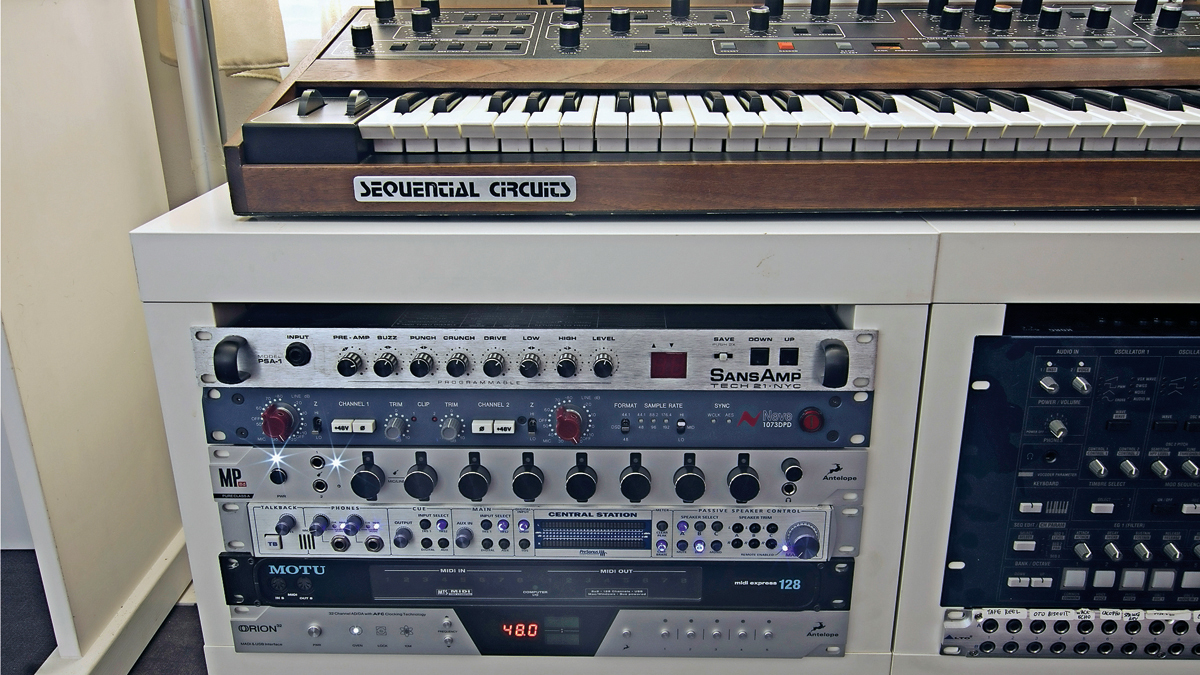
Combining musical styles
The title track is a departure into folk; did you see that as a step into the unknown?
“Well, I am certainly not a folk singer, or even a singer, since my voice sucks, but since my first album the folk roots have always been present in some way. Folk music is one of my main influences. When I was a child, the main music we used to listen to in the car was American folk and country, and I’ve always related that kind of music to the Sardinian landscapes.”
What were the challenges in bringing so many different musical elements together?
“The concept since the beginning was to keep a dance vibe but translate the tracks into something a bit different yet listenable. I didn’t want it to sound necessarily techno or house, or something in between, because that would have been too limiting. I listened to a lot of trance from the early ’90s, so for the clubby parts I tried to move towards that flavour. I found it fresh and unusual to my ears, but I knew it was risky for the audience.”
Was it also a challenge to make the album a cohesive experience for the listener?
“You can always combine lots of influences and genres together but the challenge is making a palette that combines 60 minutes of music and keeps it believable. A lot of people wanted another A Raver’s Diary and it would have been easy to make them happy, but for me that album was already done so it would have been pointless doing it again.
“During high school there were bands and artists and you anxiously waited for their new album, and if the album was too different from what you were expecting it was always a disappointment. It’s hard to make all the listeners happy, but if you never try anything new or unexpected you’ll never know if it’s good or not and you won’t evolve.”
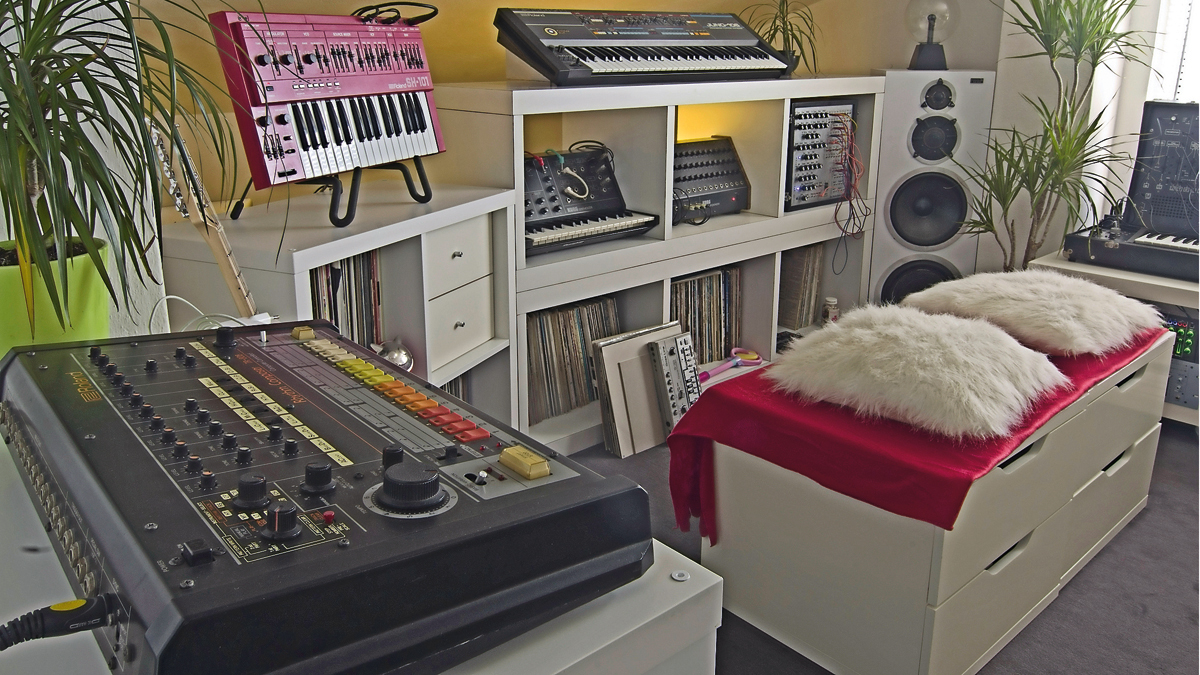
DAW of choice
What DAW are you using and why do you prefer to use it above others?
“I used Cubase and Logic for ages, but I didn’t feel comfortable with Cubase 7 so I switched to Ableton Live, which I had been using for live performances since Version 3 back in 2003. The track III was done entirely on Live, which was perfect for the kind of work I had in mind – more experimental, minimal and loopy. Ableton’s incredibly stable and so easy to use, and they have a very efficient customer care service, but it does lack some fundamental features for my way of work.”
How did you get around that?
“Because the new album is more musical and song-oriented, I needed to come back to a more standard sequencer. After some trials with Cubase 7 and 8, I switched back to Cubase 6.5 and felt at home again. In many ways, Logic is better than any other DAW out there for what it offers, but it hasn’t even got 30% of Cubase’s stability, and it’s made by Apple!
“Steinberg also has an amazing customer support but, let’s be honest, they’ve been around for ages producing music software, not telephones, fridges or cars! The new version 8 is amazing and has a lot of new and improved functionalities, but I still don’t feel comfortable with its mixer console. With Cubase 6.5, I can work with my eyes closed.”
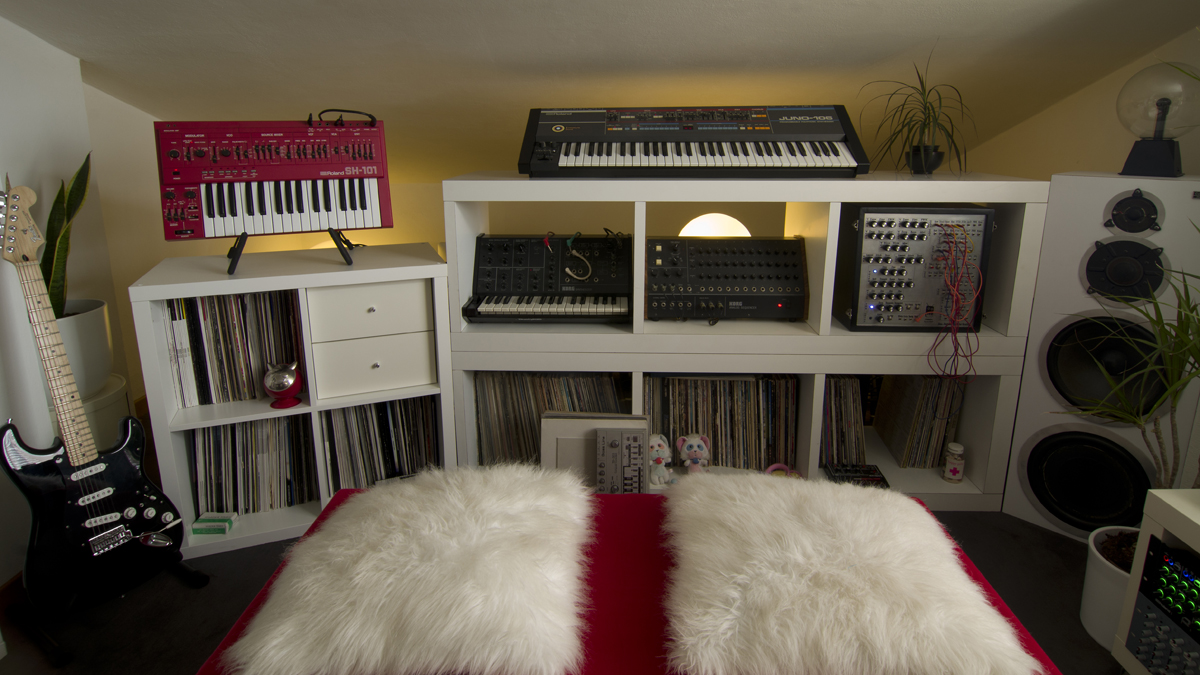
Right tools for the job
What synths do you most like playing with in the box?
“TAL plug-ins are good and the Juno replica is pretty convincing. Soundtoys and Audio Damage are also great. Universal Audio too, but I am getting sick of stuff that needs dongles or hardware. I need everything that’s running in my studio to be able to run on my laptop too, so I’m avoiding anything that requires hardware. Arturia plug-ins are now dongle-free and they’re simply ‘wow’. Would you ever imagine ten years ago that an entire Jean- Michel Jarre studio would fit in a 12-inch laptop?”
So you no longer have a preference for hardware synths over sounds in the box?
“I don’t make much distinction. I think the sole difference between hardware and software is mainly in the way you interface with them. Hardware is very tactile, software is very handy, but they both have their downsides. Software for me is extremely important because it is always there wherever you are. It doesn’t require any maintenance and you can always make changes right up until the final mixdown. I love this aspect.
“Hardware, on the other hand, gives you a more natural approach to sound and can be more spontaneous and easy to programme. I am not a big fan of modular synths though; I like the idea of their infinite configurations and the limitless possibilities, but the fact you can’t store your work in any way is very frustrating. With the ARP 2600 you can get really lost patching, but I know it well enough that I can easily replicate a sound that I already did on it. It’s so weird that you can patch it the same way ten times, yet you’ll never get the same result – it’s totally unpredictable!”
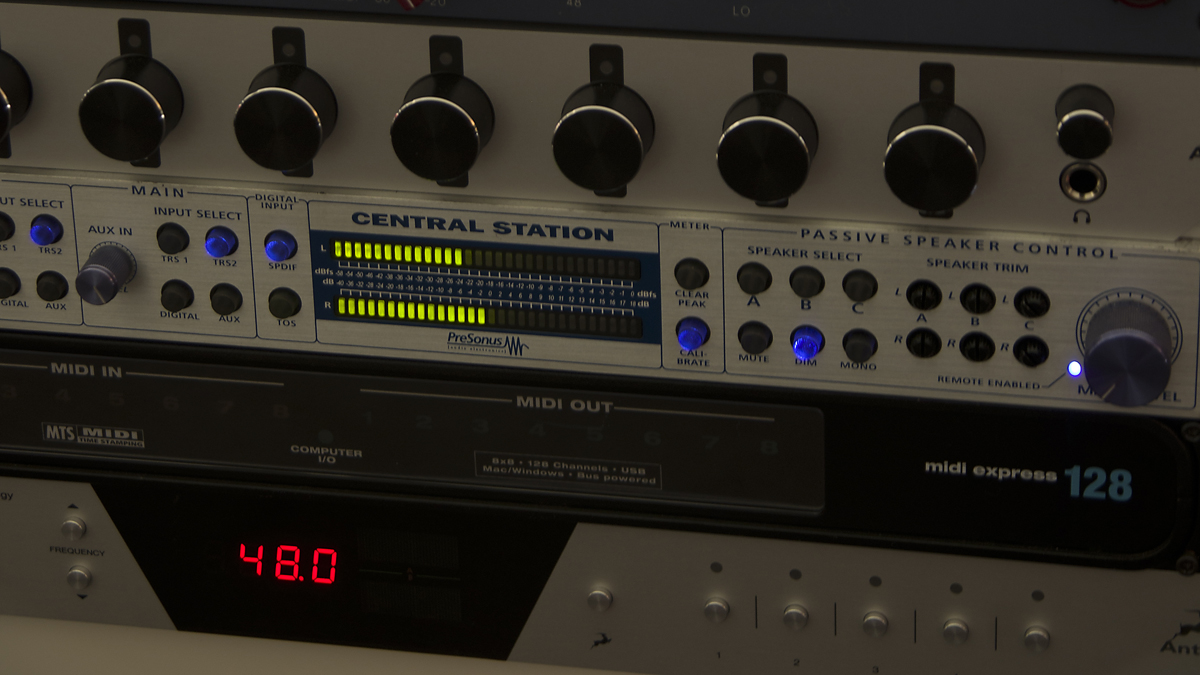
Hardware
Did you use any other hardware synths or gadgets on the album?
“I used the Roland SH-101 for some basslines; I love it. I used it quite often because it has very basic controls and not many possibilities, but sounds very good. I’ve had it for over ten years and it’s rock-solid and has never given me a problem. The Juno, ARP 2600 and Prophet-5 were all used at times, but other than the real instruments that were all played by other people, I did use a harmonica and a little blow organ. Oh, and I used the Teenage Engineering OP-1 for some sketches too, but that wasn’t included in the final recording.
“I also have a spring reverb that acts as a filter. I sometimes use it to process software synths, as you can drive it hot and it makes a nice dirty distortion. I have other little boxes, pedals and effects but I didn’t use them at all for this album.”
Was everything recorded in the box or rerouted through outboard gear?
“Yes, all the tracks have been made ITB. I changed my old Mac Pro recently from the more recent ‘black trash bin’, as the older one couldn’t handle all of the tracks and plug-ins. All the tracks have been processed through a reel-to-reel recorder, as well as some single stems, and everything passes through the Orion 32 AD/DA converter. This sound card is amazing. It’s simple but sounds very transparent, and it has extremely stable drivers, even when pushed hard and working with 32 channels simultaneously.
“I use it like a patchbay; my whole studio is connected to it and you can patch anything to anything with a few clicks. Before the Orion, I had an Apogee Ensemble, but it gave me so many problems. It was terribly unstable and broke twice.”
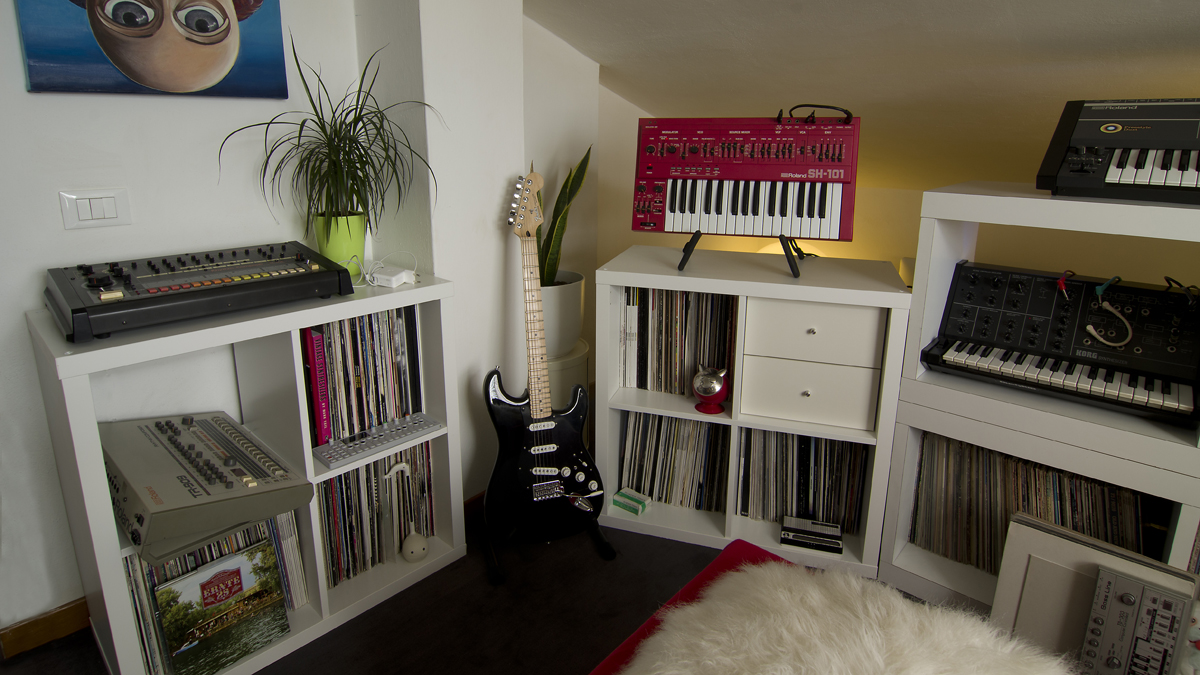
Follow your heart
What preamps are you using?
“I’m endorsed by Antelope and they recently gave me one of their MP8d class-A preamps, which is extremely good and directly matches the Orion. The acoustic instruments and vocals were all recorded through SSL and Neve preamps with the AKG C414 microphone, except for the trumpet – that was initially recorded on the AKG but I eventually used a simple SM58 mic and the result was definitely better.
“I am not an expert in recording techniques at all, but a good pair of ears can help realise a whole album. Every song I work on teaches me something new, so hopefully I will have more experience to draw from on my next recordings.”
Do you have any tips to pass on to our readers?
“The most important thing is to follow your heart, forget the rules, forget the trends, and just do whatever you feel like doing. That’s fundamental.”
Do you have plans to play the album live?
“It would be great to present the album on tour with all the musicians that take part in the record. Maybe some summer festivals; that’d be a dream.”
Not So Green Fields is out now via Isolade. For all the latest news, release info and DJ dates head to Dusty Kid’s Facebook page.
Future Music is the number one magazine for today's producers. Packed with technique and technology we'll help you make great new music. All-access artist interviews, in-depth gear reviews, essential production tutorials and much more. Every marvellous monthly edition features reliable reviews of the latest and greatest hardware and software technology and techniques, unparalleled advice, in-depth interviews, sensational free samples and so much more to improve the experience and outcome of your music-making.


